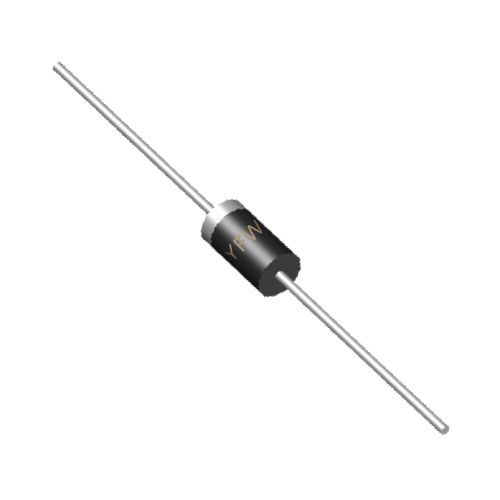How to Measure the Amplification Capability of Transistors
Date:2025-06-20 Categories:Product knowledge Hits:774 From:Guangdong Youfeng Microelectronics Co., Ltd
Most modern digital multimeters (DMMs) come equipped with a transistor tester that measures the current gain (hFE), a direct indicator of amplification capability.
Step 1: Identify the transistor type (NPN or PNP) and its leads (base, collector, emitter) using the datasheet or physical markings.
Step 2: Set the multimeter to the hFE measurement mode. Insert the transistor into the dedicated socket on the meter, ensuring correct lead alignment (B, C, E slots).
Step 3: Read the hFE value displayed. For bipolar junction transistors (BJTs), typical hFE ranges from 20 to 200 for general-purpose types. A significantly lower or higher value may indicate a defective transistor or inappropriate application selection.
Note: This method provides a quick, non-circuit test but works best for small-signal transistors and may not account for varying operating conditions like temperature or voltage.
Constructing a simple biasing circuit allows real-world evaluation of the transistor’s amplification under specific operating conditions.
Required Components: Transistor, resistors (base 偏置电阻,collector load resistor), DC power supply, signal generator, oscilloscope, and breadboard.
Step 1: Build a common-emitter configuration: connect the base to the signal generator through a current-limiting resistor, the collector to the power supply via a load resistor, and the emitter to ground.
Step 2: Apply a small AC input signal (e.g., 1kHz, 10mV) and a DC bias voltage to set the quiescent operating point (Q-point).
Step 3: Observe input and output signals on the oscilloscope. Calculate the voltage gain (Av = Vout/Vin). A functional transistor should amplify the input signal; a gain close to 1 or inversion without amplification may signal issues like incorrect biasing, poor component quality, or wrong transistor type.
Advantage: This method simulates actual operating conditions, making it suitable for power transistors or high-frequency applications.
Professional curve tracers (e.g., Tektronix curve plotters) offer detailed characterization by displaying the transistor’s output characteristics (Ic vs. Vce at different Ib levels).
Step 1: Connect the transistor to the tracer’s test socket, ensuring proper polarity for NPN/PNP types.
Step 2: Set the sweep parameters (collector voltage range, base current steps) based on the transistor’s specifications (e.g., VCE(max), IC(max)).
Step 3: Analyze the displayed curves: the slope of the linear region indicates the transconductance (for FETs) or current gain (for BJTs). A uniform, spaced set of curves signifies good amplification linearity, while crowded or irregular curves may indicate low gain or defects.
Tip: Always refer to the datasheet’s typical curves for comparison to ensure the device meets application requirements.
Operating Conditions: Amplification capability varies with collector current (IC), supply voltage (Vcc), and temperature. Test under the same conditions as the intended application.
Component Tolerances: Use precision resistors and stable power supplies to minimize measurement errors in breadboard circuits.
Safety: For high-power transistors, ensure adequate heat sinking and current limiting to prevent damage during testing.
Measuring a transistor’s amplification capability requires a combination of quick diagnostic tools (multimeters), practical circuit testing, and advanced characterization (curve tracers). By choosing the right method based on the transistor type (BJT, FET, etc.) and application requirements, you can effectively validate component performance, troubleshoot circuit issues, and optimize designs for efficiency and reliability. Always cross-verify results with the manufacturer’s datasheet and consider environmental factors that may affect transistor behavior.
This approach balances technical precision with practicality, ensuring both novice and experienced users can confidently assess transistor performance in various electronic systems

Previous:
Classification, Structure, and Principle of MOSFET
Next:
What is a high-frequency transistor? The composition, characteristics, principles, applications, installation, and distinction between high-frequency transistors and low-frequency transistors